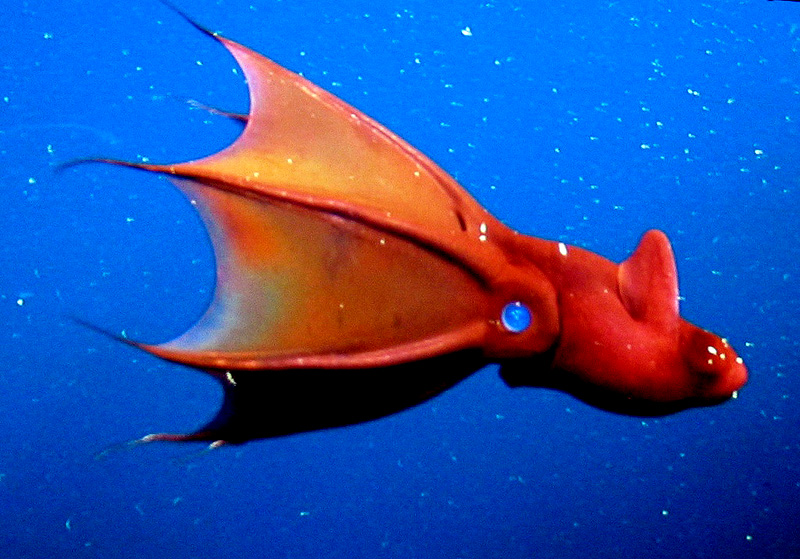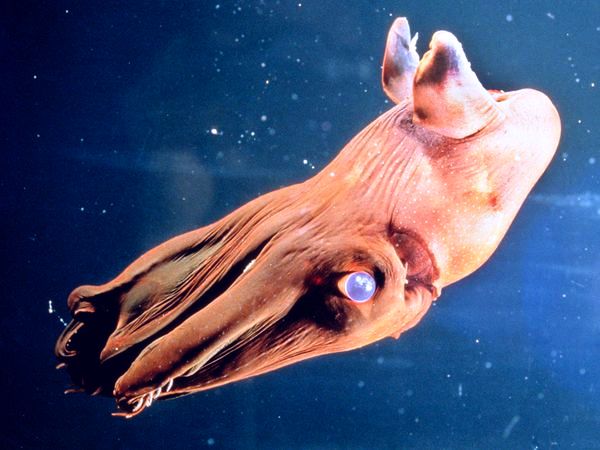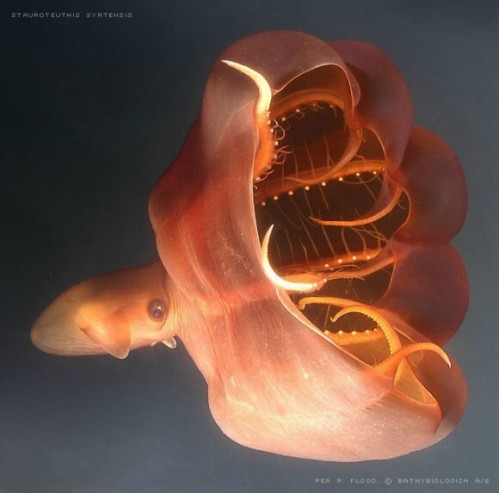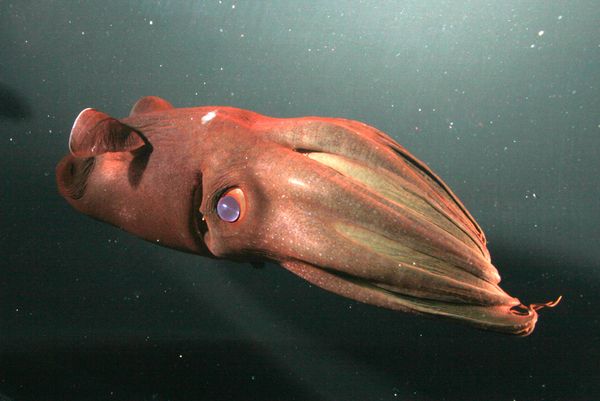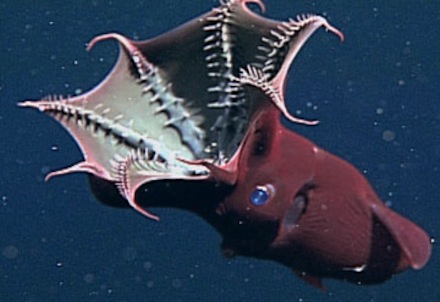Vampire Squid: Photos And Details
The title of ‘vampire squid’ gives this creature of the deep a pretty sinister overtone; and the way it looks certainly doesn’t help its case much either. But does the vampire squid live up to its edgy name and fearsome appearance? Will it suck your blood? Will it suck anything’s blood? In a word, no.
The Latin name for the vampire squid is Vampyroteuthis infernalis meaning “vampire squid of hell”, this guy really has got an image problem. Even nomenclature wants us to believe that it eats babies.
Although the poor vampire squid is much maligned, it wouldn’t actually hurt a fly (or their submarine counterpart). They live between 600 and 900 metres down in tropical waters and thanks to some odd retractable sensory filaments they are placed in an order all of their own: Vampyromorphida. As you can tell from looking at them, their closest evolutionary buddies are the squid and octopus.
Vampire squid grow up to 30 cm in length, so they’re certainly not massive in the world of cephalopods, with giant squids being measured nearer to 17 metres at their longest. Its colouring varies from black to deep red with piercing rouge eyes, and each of its eight arms are connected by a lovely skirt of skin. Its eyes, at 2.5 cm in diameter are the largest in the animal world in relation to body size, enabling it to see shadows in the low light levels of the deep.
Their main method of motion derives from the two ear like fins on either side of its body.
The vampire squid can live at lower oxygen concentrations than any other cephalopod. They can thrive in areas with just 3% oxygen in the water. This has enabled it to live deeper than any of its cousins and create its own little niche in the depths. To cope with this lack of oxygen vampire squid have the lowest metabolic rate of any cephalopod, a large gill surface area and very weak muscles. Cephalopods use hemocyanin to carry oxygen rather than haemoglobin like mammals. Hemocyanin is blue in colour when oygenated and colourless when deoxygentated.
Vampire squid don’t have the ink sack that squids use as defence; instead they fire out a cloud of sticky bioluminescent mucous from the ends of their tentacles. This cloud consists of a myriad of blue orbs of light, which if you ask me is much cooler than boring old black ink. This Pink Floyd-esque light display can last up to 10 minutes giving them ample time to escape their predators.
The main source of food for the vampire squid isn’t the fresh blood of virgins as you might expect. It seems that their main source of nutrition is so-called ‘marine snow’. Marine snow is particles of dead and decaying matter that drift to the bottom of the oceans as a fine snow like shower. They’re the only cephalopods that don’t catch live prey, possibly as an adaptation to living with very little oxygen. They haven’t got the energy for a chase.
So they’re not actually scary at all are they? They wouldn’t even nibble at you, they’d just shower you in bright blue orbs.
MORE FROM THE DEEP:
THRESHER SHARKS AND THEIR WEIRD TAILS
DIVERS NEARLY SWALLOWED BY HUMPBACK

